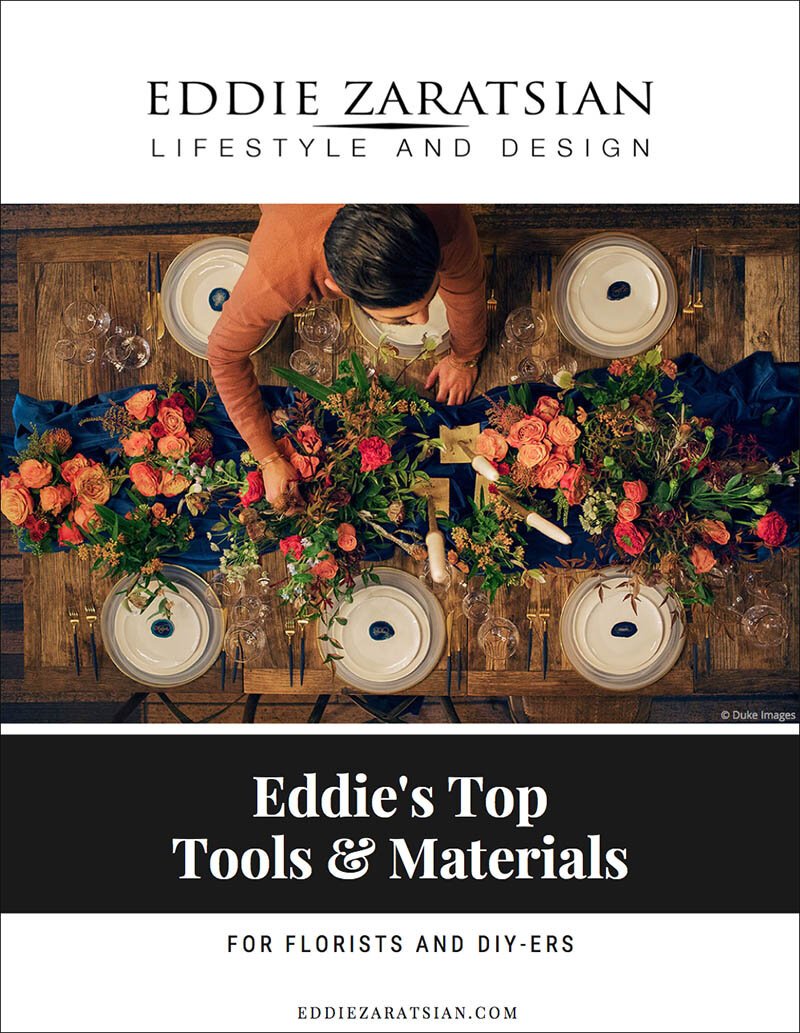Your Guide To Colorful Wedding Bouquets (Plus Inspiration Gallery)
Designing with bold colors is a true passion of mine, so when one of my brides is excited to carry a colorful wedding bouquet, I’m thrilled. From delicate blush bouquets made with peonies or garden roses, to vivid, multicolored bouquets filled with the freshest flowers of the season, using colorful blooms in your personal florals can add wonderful energy, beauty and personality to your wedding look. Regardless of the color palette I’m working with, there are a few concepts I always keep in mind when creating a bridal bouquet.
The Wedding Dress
When designing a wedding, I almost always begin my inspiration journey with the wedding dress. The bride’s dress tells me so much about her personal style and the atmosphere that the couple is envisioning for their event. Is it minimal, modern and streamlined, or is straight out of a fairy tale? Is it ultra-traditional and sophisticated? Or does it have a relaxed and playful quality? The look of the bouquet, colorful or not, should compliment the style of the woman.
The height of the bride and the scale of her gown is also important to take into consideration. If you’re wearing a full, voluminous ball gown, you might not want to pair it with a full, voluminous bouquet. Such a big arrangement may overwhelm your look and draw attention away from your face. It may also feel overwhelming to you to have to manage a large skirt and large bouquet at the same time. In that case, consider a smaller and more compact bouquet to balance your look and keep the focus where it’s most important - on you!
Taller brides wearing sleek column dresses or bias cut gowns look wonderful with long, cascading bouquets. Wedding dresses that have medium volume skirts and soft textural details pair beautifully with loose, organic, hand-tied bouquets. There are no strict rules for bridal bouquets since every wedding is unique, but I always let the dress and the bride’s personal style guide my inspiration.
Bouquet Shape
The bouquet shape can impact what flowers I choose, and vice versa. If you know what bouquet shape you want, then be sure to choose blooms that will help you create the shape you’re envisioning. Don’t choose flowers that will fight against you!
For example, flowers that have a naturally round shape themselves, like roses, peonies and ranunculus, will help you create a round bouquet. They fit together nicely and can create the round, uniform look you’re going for.
If you know you want something looser or cascading, be sure to choose flowers and botanicals with varying shapes and lengths. Once you layer them together they will automatically create a more natural look.
Here are some vibrant blooms that I often turn to when creating colorful wedding bouquets - you can use this as a reference when deciding which flowers will work best for you!
Garden Roses
Spray Roses
Ranunculus
Anemone
Amaranthus
Peonies
Tulips
Bougainvillea
Cosmos
Orchids
Dahlia
Lisianthus
Poppies
Flower Color
Whether you’re using little hints of color or big, bright combinations, the key to using color successfully is first to understand it. Color theory is a foundational part of any artist or designer’s work, and one that I teach in-depth in my Masterclass on the Art and Business or Luxury Floral and Event Design. If you’re interested in floral design, I highly recommend spending time learning about the color wheel. It’s made up of primary, secondary and tertiary colors, and is layered further with additional hues, tints, shades and tones. Understanding how colors compliment, amplify or oppose each other is an important step in being able to execute a look that maintains a natural feeling and doesn’t appear disorganized. Mother nature is the ultimate artist when it comes to color!
Flower Texture
Color isn’t the only thing that can add dimension to your bouquet - texture is one of the most important components in floral design! Think about the difference between a bouquet made from sleek, sculptural orchids, or one made from soft, fluffy, open peonies. One creates a modern look and the other, more soft and delicate. Mixing multiple blooms together can create additional texture and give your eye more places to travel. In addition to your flowers, play with the textures of your finishing details like ribbon around the stems. Will you use shiny satin ribbon? Or how about a soft chiffon ribbon with an unfinished edge?
Here are some colorful wedding bouquets I’ve designed over the years. I hope they bring you inspiration! And to see how I create classic white bouquets, visit my Guide to White Wedding Bouquets.
PHOTOS BY: Kristine Grinvalde Photography, Kris Kan, Rene Zadori, Armen Asadorian Photography
Interested In More Wedding Inspiration?
Join our creative community below, and download a FREE GUIDE filled with Eddie’s favorite floral tools and materials!











